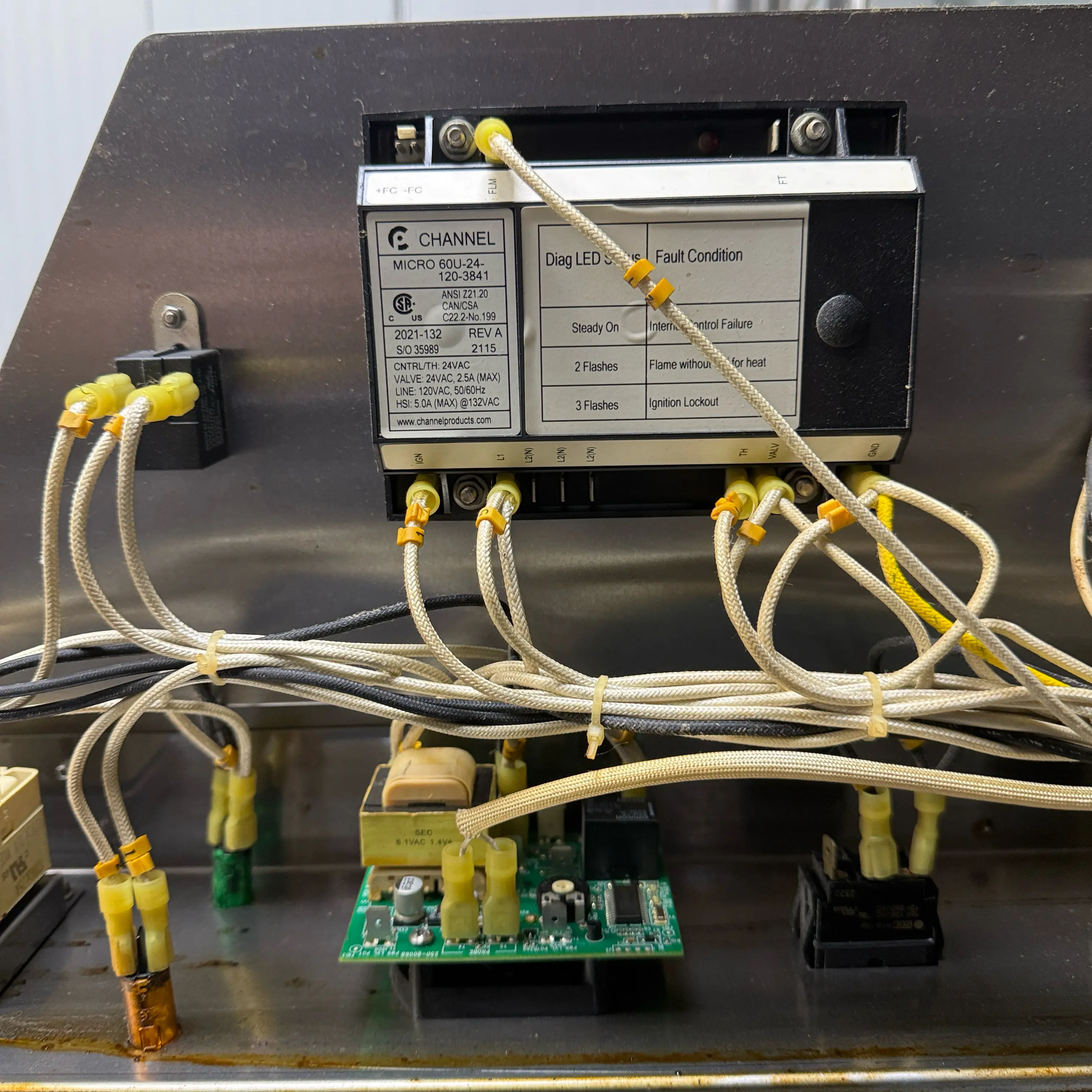Amana Appliance Repair Services
We handle repairs on Amana's most commonly used household units.
Volt & Vector Appliance Repair
We handle repairs on Amana's most commonly used household units. From basic maintenance to system faults, we cover:
Amana appliances are known for their reliability and affordability, but like all brands, they experience common mechanical and electronic issues. Refrigerators often struggle with cooling problems due to compressor relay failure, refrigerant leaks, or defrost system malfunctions. Frost buildup in the freezer typically points to a faulty defrost heater, thermostat, or sensor. Loud compressor or fan noises may indicate motor failure, ice buildup, or worn bearings. Water leaks are frequently caused by clogged defrost drains, cracked drip trays, or damaged inlet valves. Ice makers may stop working due to frozen water lines, low water pressure, or dispenser motor failures. Error codes like "OF" (demo mode) or "PF" (power failure) can often be resolved by resetting the appliance.
Washing machines commonly fail to start or spin, often due to lid lock failures (E41 error ), motor relay issues, or broken drive belts. Drainage problems may stem from a failed drain pump (E21 error ) or kinked hoses. Slow water fill times are typically linked to clogged inlet valves (E11 error ) or sediment buildup. Excessive vibration during cycles can result from unbalanced loads, worn suspension rods, or damaged drum bearings.
Dryers may fail to generate heat due to blown thermal fuses, broken heating elements, or gas valve coil failures. Units that run but don’t dry clothes often have blocked vents, lint buildup, or airflow restrictions. Drum malfunctions, such as not turning, usually involve broken belts, motor failure, or pulley issues. Mid-cycle stops or burning smells may signal overheated components, faulty thermostats, or lint accumulation.
Dishwashers frequently struggle with poor cleaning performance, often due to clogged spray arms, low water pressure, or detergent dispenser issues. Leaks from the door or base are typically caused by worn seals, cracked tubs, or damaged hoses. Drainage failures may involve a faulty drain pump or blocked filter. Unresponsive control panels can result from moisture damage, software glitches, or power interruptions.
Ovens and ranges may fail to heat or cook evenly due to faulty bake/broil elements, temperature sensor malfunctions, or relay board failures. Burners not igniting often involve defective igniters, gas valve issues, or electrical faults. Control knobs or touchpads may become unresponsive due to sensor errors or board failures. Oven doors that won’t close properly may require hinge repairs or realignment.
When deciding to repair or replace, consider the appliance’s age and repair cost relative to its value. Amana’s budget-friendly pricing makes repairs practical for units under 8–10 years old, while older models or severe electronic failures may justify replacement.
Pros of Repairing Amana Appliances
Amana appliances, owned by Whirlpool, benefit from affordable and widely available parts , such as motors, pumps, and thermostats, which are often shared across Whirlpool/Amana models. Their straightforward mechanical design —with fewer electronic components—simplifies diagnostics and repairs, making them ideal for budget-conscious households or rental properties. Repairing is typically cost-effective for units under 6–8 years old , especially for minor issues like a blown thermal fuse or faulty drain pump.
Cons of Repairing vs. Replacing
Amana appliances are not premium units, and repair costs can approach the price of a new basic model ($300–$800), diminishing their value. Plastic components , such as door latches and knobs, wear out faster on older units, leading to recurring repairs. Energy efficiency is also a drawback, as older models may consume more power, increasing long-term costs. Additionally, Amana lacks modern smart features (e.g., Wi-Fi, app controls) found in newer brands, making upgrades appealing for tech-focused users.
When to Repair
Repair is sensible if the appliance is under 8 years old , the issue is isolated (e.g., a broken belt or sensor), or the unit is in a rental where replacement isn’t feasible.
When to Replace
Replacement becomes practical for units over 10 years old , those with multiple simultaneous failures , or when parts are discontinued. If repair costs exceed 50% of a new appliance’s price , upgrading to a more efficient or feature-rich model is advisable.
Because Amana appliances rely on simplified circuit designs and minimal onboard diagnostics, most troubleshooting is done manually. This includes continuity checks across thermostats and fuses, inspection of heating elements, drain pump testing, and mechanical relay verification. Amana units share parts with other Whirlpool Group models, making replacements widely accessible. Common service procedures include lid switch bypasses, control knob recalibration, belt and pulley replacement, and heater element diagnostics — typically completed without proprietary tools and often same-day.
Repairs backed by guarantee.
No hidden fees. Ever.
Trusted service. Certified technicians. Local expertise.
Volt & Vector is a Brooklyn-based appliance repair company serving NYC. We fix washers, dryers, ovens, fridges & more — fast, certified, and local.
.png)

.png)
.png)







